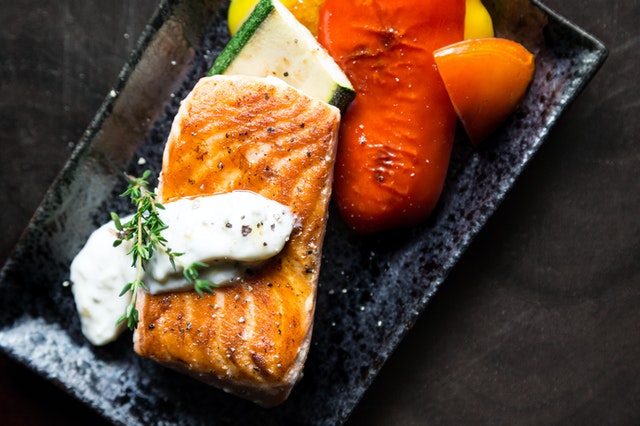Each month we have a goal to make small, positive changes to develop new habits and a more healthful lifestyle. The July topic is about adding fish and seafood to your meals. Fish is a good source of protein and it isn’t high in saturated fats. There is no doubt that Americans should include more healthy fish in their diets. The current average consumption of seafood is 2.7 ounces per person per week, which doesn’t come close to the recommended 7-8 ounces per person per week. Almost 90% of Americans do not meet the recommendation for seafood consumption.
A word of caution: Though everyone is encouraged to eat seafood, the benefits and risks of eating certain types of fish can very based on a person’s stage in life. Pregnant and breast-feeding women and young children should follow the U.S. Food and Drug Administration’s (FDA’s) advice about eating fish.
The American Heart Association recommends at least 2 3.5-ounce servings or 7 ounces of fish per week. They also encourage making at least one of those fish servings a fatty fish that contains omega-3 fatty acids. Why? These can help reduce the risk of heart disease and stroke. Fatty fish include salmon, rainbow trout, and mackerel.
The Dietary Guidelines for Americans 2020-2025 concur. They also recommend shifting away from proteins with more saturated fats and high sodium levels. Fish and seafood is also a recommended component of the Mediterranean Diet. Both of these encourage nutrient-dense lean protein choices that include seafood.
Evaluate your current fish and seafood consumption. Do you need to eat more? Set some goals for yourself this month. Is it time for you to go fishing? Here are some thoughts and ideas to help you along:
- Don’t necessarily like seafood? How about giving it another chance? Try a different type or preparation method!

- Try exploring a seafood you’ve never eaten. Visit a seafood store or fishmonger and look for something new.
- Many people don’t eat seafood because they don’t know how to cook it. Look for new recipes online or dig out an old cookbook and try something new. How about whitefish with roasted asparagus, skillet seared salmon and quinoa, grilled trout, everything-spice salmon, fish tacos, or a quick meal of shrimp and pasta?
- Fast fish doesn’t have to come from a drive-thru. Your microwave is the perfect place to cook seafood: the moist atmosphere allows for quick low-fat easy cooking.
- Fish is available fresh, frozen, and in a can. Select the one that is easiest for you and fits into your food budget. Try making salmon salad sandwiches out of canned salmon.
- Seek alternatives to deep fat fried fish: try oven or air frying. Or broil fish quickly and finish it off with a flavorful topping.
- Do some research on sustainable seafood. Check out Monterey Bay Aquarium Seafood Watch.
By Cheryle Jones Syracuse, MS, Professor Emeritus at The Ohio State University
Copyright foodandhealth.com, reprinted with permission.

